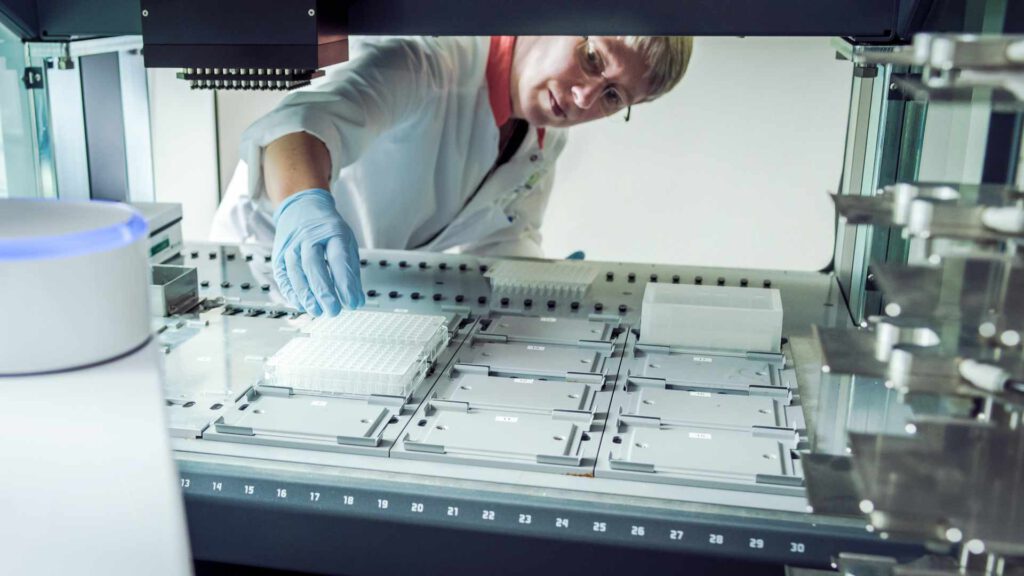There is a great deal of cutting-edge research taking place in the cheese industry. Technology is at the forefront of this research, which includes DNA studies and investigating tiny cheese samples called MicroCheese.
Cheesemaking applications
Eva Düsterhöft, who conducted this interview, worked as a food technologist and senior project manager in dairy and cheese technology at NIZO Food Research.
The more scientists understand about how cultures interact, the more they can apply this to cheesemaking, and to other fermented foods, including beyond the dairy industry.
“We learn how the cultures interact and work together, how processing conditions influence the growth of the cultures. You can exploit that when you understand it and study it better.
You can construct the composition of the different strains that you put together to create a certain flavor or texture or taste, and it helps you to get your production on a constant level. When you change, even by accident, your processing conditions, this may have an effect on the growth of the cultures that you put in the cheese milk.
One day one of the types can grow faster or more than another one, and you get a different flavor profile.”
Modeling through MicroCheeses
NIZO can work on modeling the behavior of cheeses through very small-scale microtiters. The resulting ‘products’ are called MicroCheese.
“It’s a cheesemaking system on a microtiter plate, with 96 small cheese vats. We can produce cheeses of different types, such as Gouda-type, Cheddar-type and Swiss-type, and you can study so many different strains, different conditions, different salting levels – you can run hundreds of these studies in parallel.

Once you’ve finished you cannot taste the cheese and have a sensory evaluation, but you can analytically assess how the cultures have grown. You can look into the composition of the cheeses, what the flavor profile is.
When this was developed a couple of years ago here at NIZO, we looked into the translation to large scale, and we saw that with these miniature cheeses, which are 200mg each, the flavor profile matches very well the flavor profile that you get in large scale cheeses.”
Another area of research where NIZO can use its MicroCheese system is to screen for cultures producing bacteriocines or other functional metabolites and to assess their efficacy under varying cheese-making conditions.
Developments in membrane filtration
Membrane filtration is another area of growth when it comes to cheese research.
“To make a feta-type cheese, you can make a concentrate first, so by filtering and concentrating the milk through microfiltration, and then you can make a cheese from that.
Normal cheese making means coagulating milk and then you have to remove the whey. With a full-membrane filtration process, you would first remove the appropriate amount of whey, evaluate different types of membrane, flow rate, and fouling.
We do have calculation models that we can apply to translate these data to forecasts of operational costs, for example.”
(Source: www.dairyreporter.com)
Cases
© NIZO 2025 | Sitemap - Privacy Statement - Cookie Statement - Terms & Conditions
Website by: Online Marketing Agency